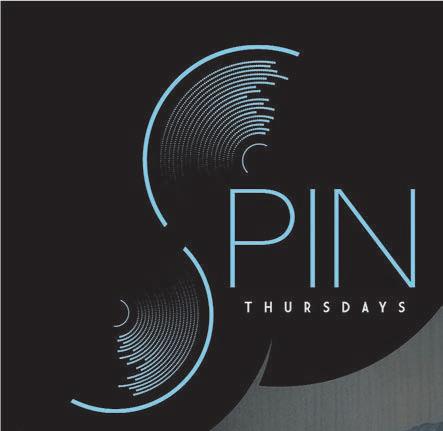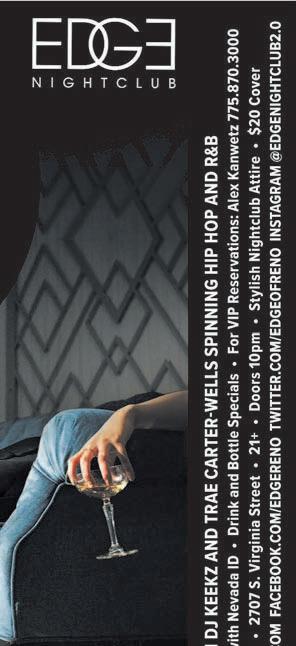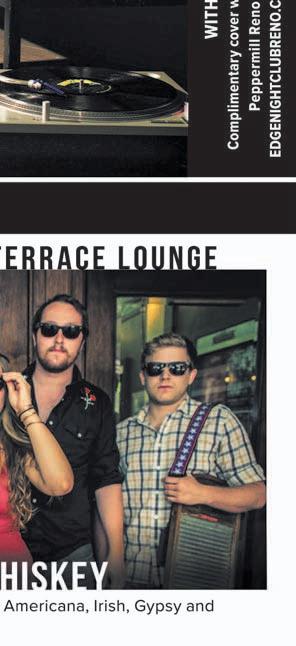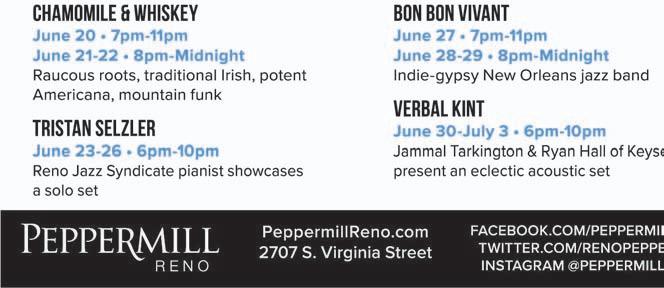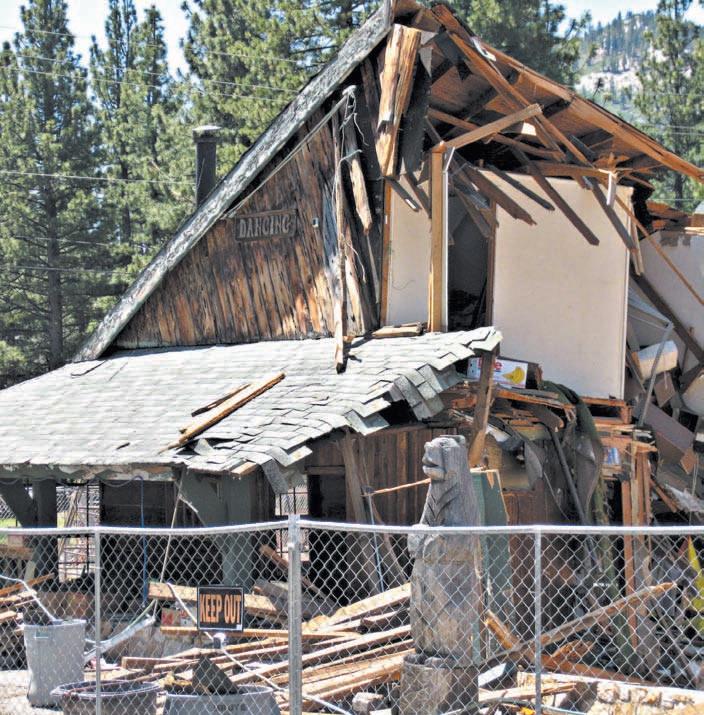
9 minute read
NEwS
from June 20, 2019
Welfare update
In an ABC interview, U.S. Rep. Alexandria OcasioCortez faulted Amazon—owned by billionaire Jeff Bezos—for its wage rates.
Advertisement
Amazon has facilities in Nevada both north and south.
Ocasio-Cortez argued that wages paid by Amazon contributed to Bezos’ estimated $117 billion fortune.
She told anchor Jonathan Karl if Bezos’ fortune is “predicated on paying people starvation wages and stripping them of the ability to access health care,” that is a public policy problem.
Bezos did not respond. The corporation issued a statement:
“These allegations are absurd. Amazon associates receive industry-leading pay starting at $15 an hour. … Amazon pre-pays 95% of continuing education tuition costs through its Career Choice program for associates who want to pursue in-demand careers.”
The corporation also posted a tweet: “@AOC is just wrong. Amazon is a leader on pay at $15 min wage + full benefits from day one. We also lobby to raise federal min wage.”
Reader comments were posted under the tweet. Samples:
“I work for Amazon in one of $15/hr jobs and I have to say we are in constant battle to finding shifts, benefits, and pay! Our job what we do for customer care is worth more than what Amazon earns and I think a $15/hr+3% commission would make it more sensible.”
“For packing boxes?”
“And? Amazon makes billions just because we buy shit. Either way, packing boxes is honest work.”
“They should stop requiring taxpayers to pay for their warehouses and to pay their employees. I have nothing against welfare, when needed, but Billionaires getting hundreds of millions in corporate welfare is ridiculous!”
An Amazon facility in Washoe County was subsidized by a four-year state business tax abatement valued at $408,100, according to Good Jobs First, which monitors corporate welfare. The abatement was designed to attract 600 jobs paying $17 an hour.
The value of all state/local subsidy awards Amazon has received is $2,400,136,208.
referendum blocked
In 1990, Nevadans voted in a referendum to retain the state’s Roe-style abortion statutes (“Campaign for Choice,” RN&R, June 6).
Missourians are now trying a twist on that effort—putting the new state anti-abortion law on the ballot so it can be voted on by Missourians. But Secretary of State Jay Ashcroft (the son of exactly who you think) has rejected their petitions.
The Missouri referendum law says referendums cannot be used on “laws necessary for the immediate preservation of the public peace, health or safety” and Ashcroft claims that language applies to the abortion law.
The Missouri chapter of the American Civil Liberties Union was in court on the echo of Ashcroft’s statement.
—Dennis Myers
A bear sculpture stands in front of one of the lodge buildings.
PHOTO/DENNIS MYERS
Sundance down
A beloved forest lodge slowly goes
the decision by owner Gary Schultz to bulldoze an old lodge on Mount Rose has aroused two generations of memories in local and distant minds.
Alan Burnside, at the University of Nevada, Reno in the 1960s, now of Southern California, told us, “It’ll always be Sundance to me. I drove past it last time I was up there and saw the collapsed roof. ‘Spero’s Zero’s’ beer softball games against Buddy Mercer’s Mercer-inaries were epic games. I still have my jersey.”
Sundance and nearby properties—including the adjoining Christmas Tree—once provided fine dining, and many Reno baby boomers recall their parents going up the hill on Saturday nights out. “Those were babysitter nights,” a former student of St. Thomas Aquinas School in Reno told us.
Nailing down accurate information is difficult. The site had several names—Rosemount, Sundance and Reindeer among them—and the current owner does not know when it was built. He guessed 1953 for a 50th anniversary event. An online site refers to the “early history of the Reindeer Lodge ... ’40s and ’50s.”
Actually, it was built in 1957. A Dec. 19, 1957 Reno Evening Gazette article on the opening read, “Termed by many as ‘just what the growing Mt. Rose recreational area has needed for years,’ the new Rosemount Lodge opens in the big horseshoe bend just below the Christmas Tree Friday at 7:00 p.m. to give the public a chance to sample the cuisine as well as inspect the expensive premises.” That would have been Dec. 21. A subsequent photo caption that month read, “THE ROSEMOUNT LODGE fireplace provided a warm and cozy lounging spot for the group of skiers enjoying a preview evening at the Mt. Rose highway resort.”
Jackie Powers—then Jackie Manoukian—attended that opening. She recalls the lodge as a good place for the college-aged young, and the opening as exciting.
“Because everything then was done like a Hollywood premiere, it was fun, it was excitement with people my age,” she said. “The opening of a new venue was just another excuse for celebrating. I was never a drinker, but it was just— Reno was a very small town then. Your acquaintances were people you got together with frequently.”
Three years later, the census would put Reno’s population at 51,470. Reno grew by almost that much—45,287—in just the 10 years between the 2000 and 2010 censuses.
“Of course, we had no idea of the growth we would see,” Powers said.
The 1960 growth rate was 4.71 percent. In 2010, the city—no longer as welcoming to growth—had a 2.26 growth rate.
In 1957, the lodge’s owners were reported as Denny Hill and Harry and George Vonderheide. A 1967 Nevada State Journal ad gave the then-operators as Jim and Harriett Francis.
A now-deleted website hosted by Sven Svenhardt had some more information from reader comments.
Kim Henrick wrote, “My father built the Reindeer Lodge (then the Rosemount Lodge) in 1957. The roof that is now collapsing was installed over four army barracks that were brought in by truck from Herlong, California.”
In the 1960s, the lodge became better known for music than food, and the age of patrons dropped a generation. Like a lot of legendary music sites, it is sometimes difficult to sort out who did and did not appear, but Elvin Bishop, Bo Diddley, John Lee Hooker, Elton John, Leon Russell and Tommy Tutone have been reported as performers at Sundance. The availability of those kind of acts dwindled as the baby boomers reached the age to gamble legally, prompting the casinos to lose their longtime disdain for rock ’n’ roll performers.

SEPT. 5 1958
Diane Rugg said in an email, “I don’t think there’s anything quite like that around here anymore. ... It was great fun, good times, great people in the late ’60s and early ’70s in the Truckee Meadows and High Sierra from Pyramid to Tahoe, Gerlach to American Flat, to the hot springs out there south of Carson somewhere, when we was hippies.”

Sober recollection
One person wrote of taking an overdressed date who was wearing an all-white outfit to Sundance. “[W]hen she flopped herself down in one of the many couches ... all we could see was a terrific blast of dust.”
One person who signed herself Katherine wrote, “Back in the early ’70s when it was called the Sundance Lodge, we would night ski just across the street at Tannenbaum, then stop in at the lodge for a martini or three before heading down the hill home to Reno. On one of those nights, while enjoying our martini, someone jacked up my car on two sides and stole my two back wheels. Because I had only one spare, and because it had snowed so much that night I couldn’t arrange for a tow until the next day. The bartender let me stay in one of the guest rooms that night. Lots of memories of the old place, mostly good, one not so good.”
She may have been thinking of this incident: There were softball games played regularly, and the custom was to pick the umpire “out of the crowd of onlookers.” At one game, according to a source who participated, a fellow who had volunteered to umpire “drank a beer for every run scored. After the game, he drove down Mt. Rose Highway on his motorcycle. We were in [a] jeep. He attempted to pass us in the oncoming lane going down, and around a blind turn. He didn’t see the oncoming car and swerved into a stand of Manzanita to avoid a head-on and wrapped both legs around his handlebars. We stopped, of course, called for an ambulance ... back up to Sundance [it was a pre-cell phone time], while some stayed with him. He was hospitalized and lost both legs. A total stranger.” The source said he thinks the games ended after that. Numerous people we contacted expressed dismay at the kind of drinking behavior they engaged in during that period. “Have no idea how I got home. ... Got by with a little help from my friends,” one said. Another wrote to us, “INSANE. Defies logic that we lived.” Owner Schmidt, a community activist who has occasionally run for public office, has begun demolition, but it seems to be going slowly and there is still a lot standing. Equipment has taken some big bites out of the structures. The site is fenced with signs
“I don’t reading “KEEP OUT” and “NO TRESPASSING.” think there’s There is a substantial amount of mining anything quite like equipment on the lodge property that around here or adjoining lots. An essay Schmidt anymore.” provided to us says he bought the lodge “as an investment in 1972, Diane Rugg when it was called the Sundance.” He changed the name to Reindeer Lodge. He seems to know the meaning it has to people, writing in an email, “I was honored to be at the helm for almost five decades. Many thanks to all those that worked the decks, provided the song, those that partook of the voyage.” In 2017, Svenhardt wrote, “With the Christmas Tree Restaurant and the Galena Lodge closed, and the Reindeer falling into decay, folks returning from skiing have virtually no Apres Ski opportunities once revelers are kicked out of the Timbers Bar an hour or so after the chairs stop spinning. This is truly a sad state of affairs as we have no place to come together after a powder day [to] tell our lies about the cornices we jumped and face shots we enjoyed.” Ω
